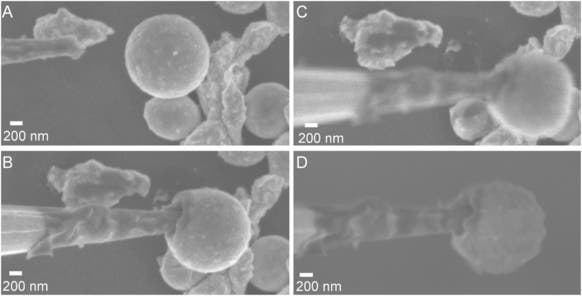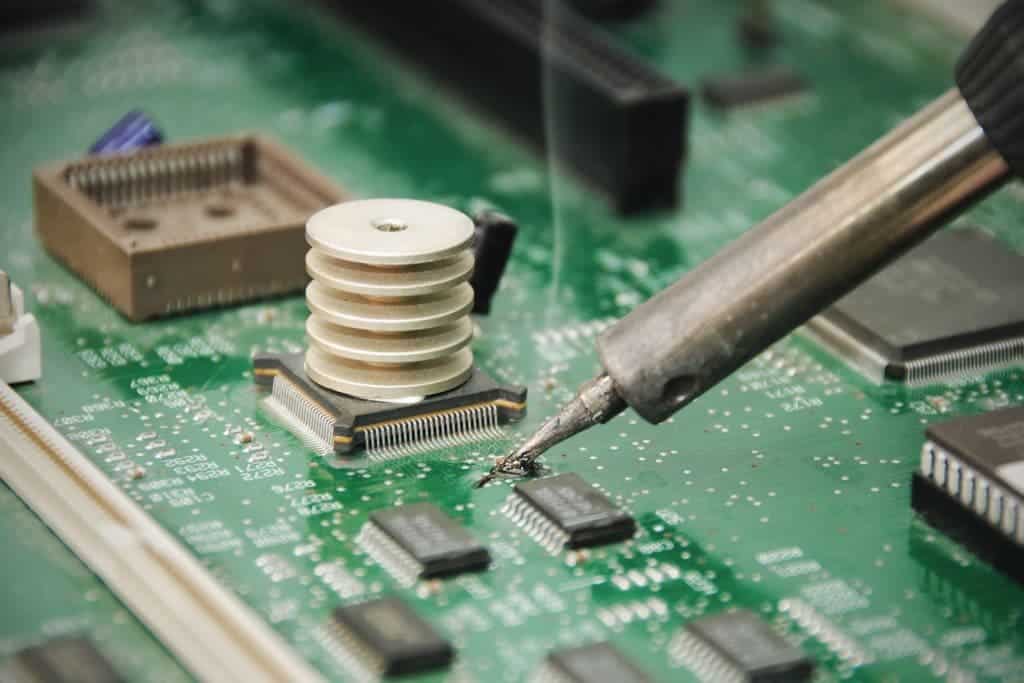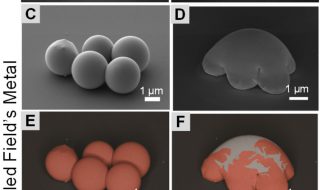“How do you do very high-level science or engineering with very little?” Asks Martin Thuo, an assistant professor of materials science and engineering at Iowa State. With a little help from science and lots of innovation, Thuo and colleagues found an elegant solution to a complex problem. They devised a way to isolate liquid metal particles at room temperature which can be used for heat-free soldering and other applications.
A molten metal will turn into a solid once it cools down enough. There are ways, however, to keep metals in a liquid state even well below its melting point. Scientists call this technique “undercooling” and typically use it to study the atomic structure of metals, as well as for tests involving metal processing.
Producing large and stable quantities of undercooled metals has proved to be a challenge, but Iowa State researchers found that if they covered tiny droplets of liquid metal with a thin coating, these formed stable particles undercooled liquid.
First, they used a high-speed rotary tool to sheer Field’s metal (an alloy of bismuth, indium and tin) into liquid droplets. They then used one of the most important and common chemical process found in nature: oxidation. They exposed the tiny metal droplets to oxygen and within moments a thin oxidation layer covered the particles. This essentially created a capsule that contained the liquid metal in an undercooled state.
The particles made in the Iowa State lab are only 10 micrometers in diameter or about the size of a red blood cell.
“We wanted to make sure the metals don’t turn into solids,” Thuo said. “And so we engineered the surface of the particles so there is no pathway for liquid metal to turn to a solid. We’ve trapped it in a state it doesn’t want to be in.”

Researchers punctured a liquid metal capsule. After the probe was retracted the metal solidified and retained the deformed shape left by the puncture. Credit: Scientific Reports
These tiny liquid metal particles could come very handy in manufacturing, especially in microelectronics. Components on a circuit board are typically soldered using hot metals which damage some sensitive components like flexible circuits.
“We demonstrated healing of damaged surfaces and soldering/joining of metals at room temperature without requiring high-tech instrumentation, complex material preparation or a high-temperature process,” the engineers wrote in their paper.
Thuo has secured a patent and is working with a spin-off called SAFI-Tech to make this technology commercially available. The findings were reported in the journal Scientific Reports.











